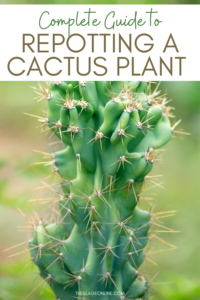The taxonomy of botanical nomenclature is an intricate tapestry woven from the diverse threads of scientific tradition, culture, and meticulous classification. The proper way of writing scientific names transcends mere formality; it is a rite of passage into the world of plants that offers clarity and precision. When we delve into the poetic realm of botanical names, we discover not only a means of identifying the flora that graces our Earth but also a fascinating journey that intertwines Latin language roots with a rich historical background.
Understanding the rules and nuances of writing scientific names is paramount for any horticulturist, botanist, or plant enthusiast. The binomial system, a gift from the Swedish botanist Carl Linnaeus, serves as our guiding star, leading us through the vast gardens of biodiversity with both simplicity and sophistication. But, as with any form of artistry, the devil lies in the details.
There lie a few foundational principles that fortify our understanding of botanical nomenclature. This discussion will illuminate these guiding principles, embellishing our understanding of the correct way to write scientific names. Let us explore each facet with an analytical lens, brushing away any confusion that may accompany the seemingly daunting task of naming.
Proper Formatting and Usage of Binomial Nomenclature
The cornerstone of botanical nomenclature is the binomial system, wherein each species is assigned a two-part name. The first part, known as the genus, is always capitalized, while the second part, the species epithet, remains in lowercase. For instance, in the name *Cactaceae opuntia*, “Cactaceae” signifies the genus, and “opuntia” refers to a species within that genus. Both elements together form the scientific name that encompasses unique identifying features of the plant.
Correct italicization of these names is not merely an artistic choice but a stringent rule of scientific writing. Italicizing the genus and species ensures visual distinction from the surrounding text. Additionally, any abbreviations such as the use of “sp.” (species) or “spp.” (species plural) add another layer of depth, indicating uncertainty about the specific species or referencing multiple species within a genus respectively. Consequently, *Cactaceae spp.* would refer to several species within the genus Cactaceae.
Moreover, the species name may sometimes include subspecies or variety information. In these instances, additional details must be appended, ideally in the format of “subsp.” for subspecies or “var.” for variety. For example, *Cactaceae opuntia subsp. engelmannii* elucidates the complexity and diversity within the species, showcasing the rich tapestry of life in a single line of text.
The Art of Pronunciation: A Symphonic Undertone to Scientific Names
One must not overlook the importance of pronunciation when discussing scientific names. The phonetics behind these Latin-derived names can often seem labyrinthine, swirling in cascades of syllables. Yet, this brings forth an intriguing metaphor: much like a symphony where every note must harmonize, so too must each syllable roll off the tongue correctly for the full appreciation of the botanical music that these names convey.
Many names may have roots derived from Greek, Latin, or even local languages, adding another layer of complexity and beauty. Understanding the etymology and the historical significance behind these names serves not just scholarly intrigue, but also deepens our connection to the natural world. For instance, *Aloe vera*, with “Aloe” signifying the genus that relates to “bitter,” and “vera” meaning “true,” hints at both the properties and authenticity of this age-old healing plant.
Moreover, when discussing scientific names, knowing the correct pronunciation can foster better communication among botanists and horticulturists, who need to exchange ideas and knowledge. A mispronunciation could lead to confusion, akin to misplaying a note in a symphonic performance, leading the audience astray from the desired harmony.
Finding Specificity amidst Generalizations
There exists a perennial necessity to differentiate between closely related plants. Each scientific name provides the specificity needed to distinguish one species from another, especially within the context of cultivation or research. In the realm of cacti, for example, the distinction between *Cactaceae pereskia* and *Cactaceae opuntia* may seem subtle, yet they flourish in entirely different habitats and exhibit contrasting morphological features.
This precision and specificity are where the beauty of botanical nomenclature truly emerges. All too often, layman’s terms can lead to misconceptions about a plant, leading to improper care or misidentification. Thus, understanding the nuances of scientific names enhances horticultural practices and ensures the correct appreciation of the flora encountered.
In ornithology, for example, a birder may find over fifty species classified within the genus *Dendroica*, each with subtle distinctions. The written labelling of these species provides a standardized means of communication, essential for both academic studies and casual discussions among enthusiasts. It fosters a shared lexicon—a needed connection within the vast field of botany.
Conclusion: Embracing the Syntax of Scientific Names
Writing botanical names correctly is not just about adhering to guidelines; it is about embracing the lexicon of nature, allowing one to participate in the grand scientific narrative that spans across generations. This sophisticated language draws us into the mysteries of plant life and opens avenues of understanding and appreciation.
The elegant interplay of Latin, classification, and the responsibility of proper attribution resonates with anyone keen to unravel nature’s complexities. Each name is a closer step to becoming a steward of biodiversity, nurturing not only the plants we cherish but also the legacy of the knowledge they carry.





Leave a Comment